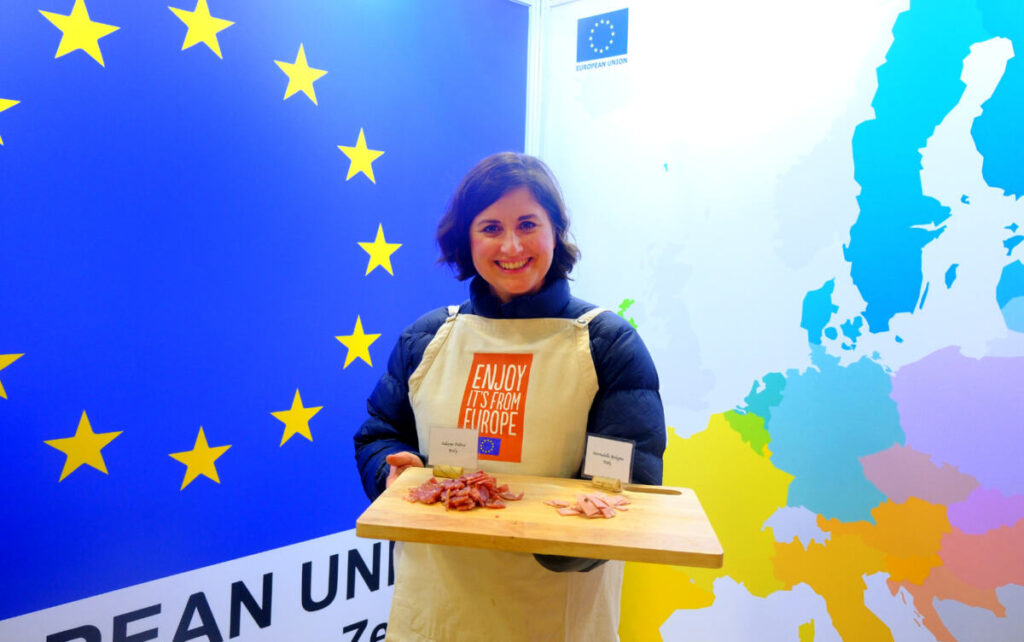EU promotes source of origin labelling at Fieldays
The EU has a tasty way to start a conversation about geographic indications for food
Part of the fun of Fieldays is the opportunity to sample an array of freebies on offer. Everything from beanies to keyrings, a cuppa or a massage, and especially, the food.
One corner stand doing brisk business in the main pavilion is the European Union (EU), which is offering samples of European cheeses, oils, vinegars and deli meats.
Lucy Ross said the team has brought a range of specialist European foods to share and all their products have three things in common, “One, they’re delicious, two, they’re European, and three, they’re geographical indications.”
So what is the EU doing at the New Zealand Fieldays? They’re not selling the food but sharing it to raise awareness and promote the value of ‘geographical indications’ to New Zealand growers, producers and customers.
Geographical indications (GI) point specifically to the source of origin of a product, with Champagne being one of the best-known examples. The indication points to the product having a particular quality, reputation or characteristic associated to the region. Ross feels the strategy has been a great tool for European growers, and “could be great for New Zealand producers too”.
Ross said the EU first came to Fieldays when the free trade agreement (FTA) negotiations between the EU and New Zealand were starting in 2018 . She sees their presence there as “a way of opening the conversation with farmers” about the FTA and finding out what they think about it.
The protection of geographical indications (GI) was described as ‘an essential outcome’ in the NZ-EU FTA, which was signed by the former government in July 2023, and came into force in May this year. In it, the EU agreed to protect “close to 2,000 EU GIs in New Zealand”, and protect existing GI for goods from wine regions like Marlborough and Central Otago.

Ross feels there is increased pride in products when they show their geographical location and showcase their region. As a GI is a collective right, not an individual trademark, Ross said it has particular appeal for Māori growers and producers.
They hope by promoting European foods at Fieldays, they can show that Aoteoroa could do this too, “because it’s a great way to add value to the product”
The stand has an array of cheeses, bread, oil and balsamic vinegars on offer, starting with milder cheeses then adding cured meats and stronger cheeses throughout the day. All products on the EU stand have a verification label to show authenticity “so people can have confidence they’re buying the real deal” and the serving team are knowledgeable about the various goods and happy to chat.
At the back of the stand, Ross pulled out samples from a well-stocked fridge. First, a wedge of Parmigiano Reggiano which has been aged for 12 months, “I have some here that have taken 30 months – these products, they’re not made overnight, they take time”
Next she picked up a goat cheese rolled in charcoal, a round of “stinky camembert” in a gingham wrap, a Greek cefalu cheese and a Livarot from Normandy. “We’ve also got heaps of feta and a lovely big wedge of sheep’s milk cheese”
The plan is to “start the conversation about the diversity and multiplicity of flavours and brands that Europe has done and show that it could also work for New Zealand”.
The conversation, and the samples ( complete with an EU flag toothpick), are available at the EU stand in the main pavilion throughout the event.




